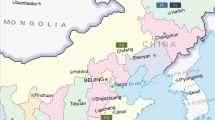Abstract
The equine ascarid parasite Parascaris equorum is well known as a ubiquitous parasite infecting foals. A sibling species, Parascaris univalens, was first described over 130 years ago, but very little attention has been given to its existence and possible implications for anthelmintic resistance, clinical disease, or host age spectrum. P. univalens only possesses one germ line chromosome pair as opposed to two for P. equorum, but the two species are otherwise considered morphologically identical. For the present study, live worms obtained from the University of Kentucky parasitology horse herd were dissected and identified using karyotyping techniques. With no exception, all specimens (n = 30) were identified to be P. univalens. Further, the karyotyping technique was adapted to ascarid eggs derived from fecal samples and carried out on samples collected from 25 Thoroughbred foals from three farms in Central Kentucky. P. equorum was not identified among these, whereas P. univalens was found in 17 samples, with the remaining being inconclusive. The mitochondrial genome was sequenced, assembled, and annotated from one male worm identified as P. univalens, and comparison with available sequence reads labeled as P. equorum revealed only 0.16 % nucleotide differences. However, it is unlikely that the sequences available in public databases have been unequivocally identified to species level by karyotyping. Taken together, these data suggest that P. univalens is likely the main species now observed in equines and that perhaps the designation Parascaris spp. should be used unless cytological characterization has confirmed the species.


Similar content being viewed by others
References
Biocca E, Nascetti G, Iori A, Costantini R, Bullini L (1978) Descrizione di Parascaris univalens, parassita degli equine, e suo differenziamento da Parascaris equorum. Acc Naz Lincei Rend Cl Sc Fis Mat Nat 65:133–141
Boveri T (1887) Über Differenzierung der Zellkerne während der Fürchung des Eies von Ascaris megalocephala. Anat Anzeiger 2:688–693
Bullini L, Nascetti G, Ciafre S, Rumore F, Biocca E (1978) Ricerche cariologiche ed elettroforetiche su Parascaris univalens e Parascaris equorum. Acc Naz Lincei Rend Cl Sc Fis Mat Nat 65:151–156
Esteban MR, Giovinazzo G, Goday C (1995) Chromatin diminution is strictly correlated to somatic cell behavior in early development of the nematode Parascaris univalens. J Cell Sci 108:2393–2404
Goday C, Pimpinelli S (1984) Chromosome organization and heterochromatin elimination in Parascaris. Science 224:411–413
Goday C, Pimpinelli S (1986) Cytological analysis of chromosomes in the two species Parascaris univalens and P. equorum. Chromosoma 94:1–10. doi:10.1007/BF00293524
Goday C, Pimpinelli S (1989) Centromere organization in meiotic chromosomes of Parascaris univalens. Chromosoma 98:160–166. doi:10.1007/BF00329679
Gordon D, Abajian C, Green P (1998) Consed: a graphical tool for sequence finishing. Genome Res 8:195–202. doi:10.1101/gr.8.3.195
Langmead B, Salzberg SL (2012) Fast gapped-read alignment with Bowtie 2. Nat Methods 9:357–359. doi:10.1038/NMETH.1923
Larkin MA, Blackshields G, Brown NP, Chenna R, McGettigan PA, McWilliam H, Valentin F, Wallace IM, Wilm A, Lopez R, Thompson JD, Gibson TJ, Higgins DG (2007) Clustal W and Clustal X version 2.0. Bioinformatics 23:2947–2948. doi:10.1093/bioinformatics/btm404
Lowe TM, Eddy SR (1997) tRNAscan-SE: a program for improved detection of transfer RNA genes in genomic sequence. Nucleic Acids Res 25:955–964. doi:10.1093/nar/25.5.955
Lyons ET, Drudge JH, Tolliver SC (1990) Prevalence of some internal parasites found (1971–1989) in horses born on a farm in Central Kentucky. J Equine Vet Sci 10:99–107. doi:10.1016/S0737-0806(06)80114-0
Müller F, Tobler H (2000) Chromatin diminution in the parasitic nematodes Ascaris suum and Parascaris univalens. Int J Parasitol 30:391–399. doi:10.1016/S0020-7519(99)00199-X
Okimoto R, Macfarlane JL, Clary DO, Wolstenholme DR (1992) The mitochondrial genomes of two nematodes, Caenorhabditis elegans and Ascaris suum. Genetics 130:471–498. doi:10.1007/BF00160405
Peregrine AS, Molento MB, Kaplan RM, Nielsen MK (2014) Anthelmintic resistance in important parasites of horses: does it really matter? Vet Parasitol 201:1–8. doi:10.1016/j.vetpar.2014.01.004
Quinlan AR, Hall IM (2010) BEDTools: a flexible suite of utilities for comparing genomic features. Bioinformatics 26:841–842. doi:10.1093/bioinformatics/btq033
Rice P, Longden I, Bleasby A (2000) EMBOSS: the European Molecular Biology Open Software Suite. Trends Genet 16:276–277. doi:10.1016/S0168-9525(00)02024-2
Stoll NR (1923) Investigations on the control of hookworm disease. XV. An effective method of counting hookworm eggs in feces. Am J Hyg 3:59–70
Tyden E, Morrison DA, Engstrom A, Nielsen MK, Eydal E, Hoglund J (2013) Population genetics of Parascaris equorum based on whole genome DNA fingerprinting. Infect Genet Evol 13:236–241. doi:10.1016/j.meegid.2012.09.022
van Beneden E (1883) Recherches sur la Maturation de L´Oeuf, la Fécondation et la Division Cellulaire (Gand, Leipzig, Paris)
Wang J, Davis RE (2014) Programmed DNA elimination in multicellular organisms. Curr Opin Genet Dev 27C:26–34. doi:10.1016/j.gde.2014.03.012
Wang J, Mitreva M, Berriman M, Thorne A, Magrini V, Koutsovoulos G, Kumar S, Blaxter ML, Davis RE (2012) Silencing of germline-expressed genes by DNA elimination in somatic cells. Dev Cell 23:1072–1080. doi:10.1016/j.devcel.2012.09.020
Wang J, Garrey J, Davis RE (2014) Transcription in pronuclei and one- to four-cell embryos drives early development in a nematode. Curr Biol 24:124–133. doi:10.1016/j.cub.2013.11.045
Zerbino DD, Birney E (2008) Velvet: algorithms for de novo short read assembly using de Bruijn graphs. Genome Res 18:821–829. doi:10.1101/gr.074492.107
Acknowledgments
The authors are grateful to Dr. Donato Traversa for providing a useful translation of published Italian work. Judy Lundquist is warmly acknowledged for her technical help with fluorescence microscopy. The Clay Fellowship Fund for visiting scholars financially supported Dr. Goday’s visit at the University of Kentucky.
Conflict of interest
The authors declare no conflicts of interest.
Author information
Authors and Affiliations
Corresponding author
Rights and permissions
About this article
Cite this article
Nielsen, M.K., Wang, J., Davis, R. et al. Parascaris univalens—a victim of large-scale misidentification?. Parasitol Res 113, 4485–4490 (2014). https://doi.org/10.1007/s00436-014-4135-y
Received:
Accepted:
Published:
Issue Date:
DOI: https://doi.org/10.1007/s00436-014-4135-y




